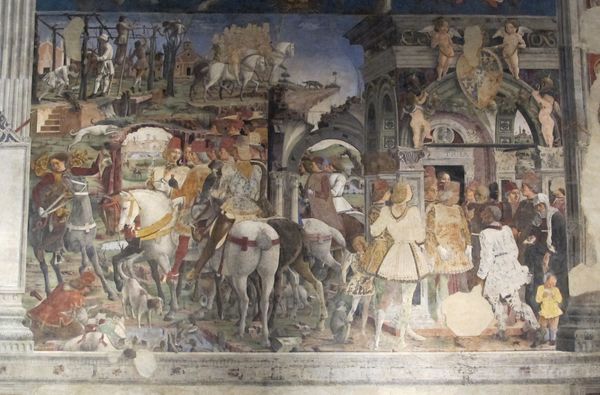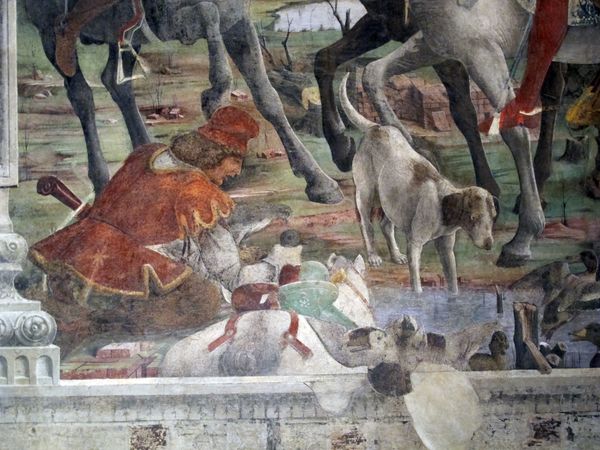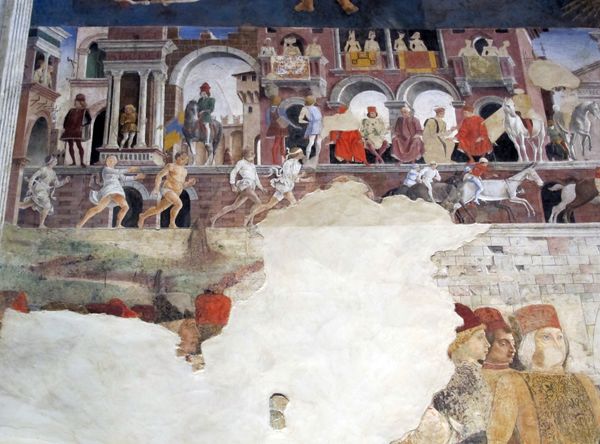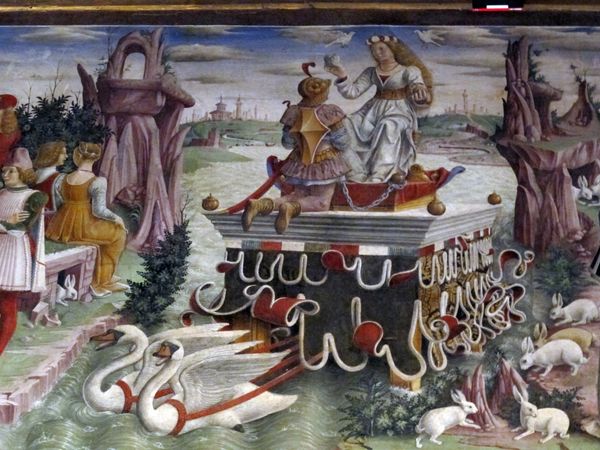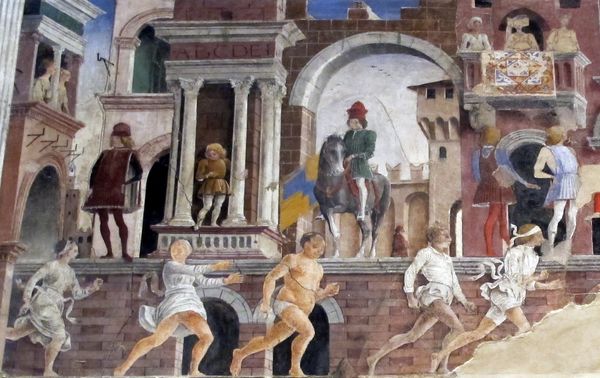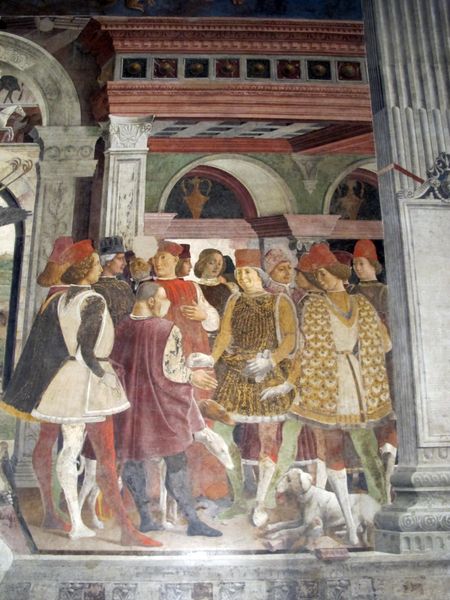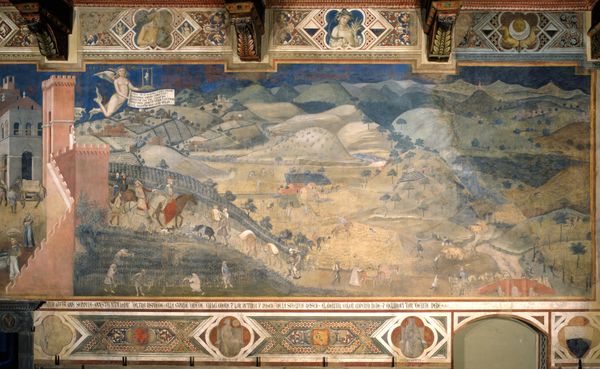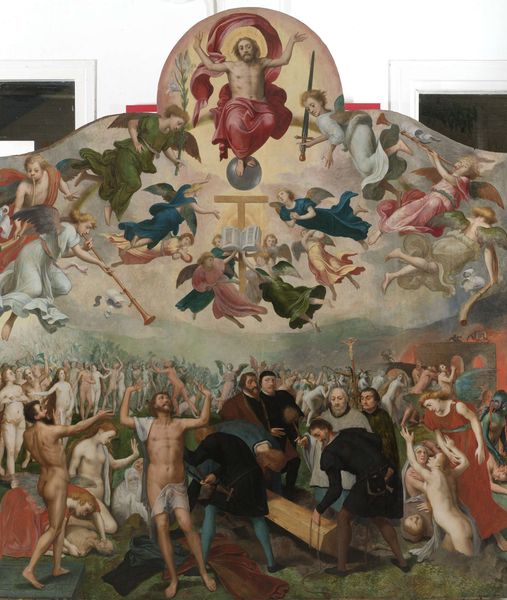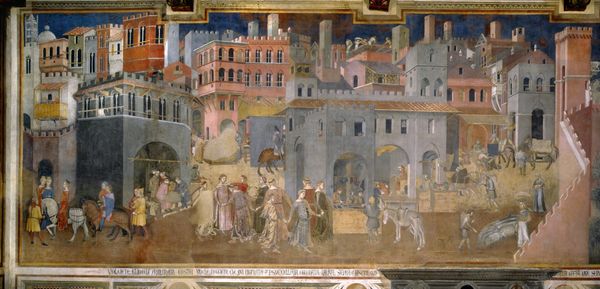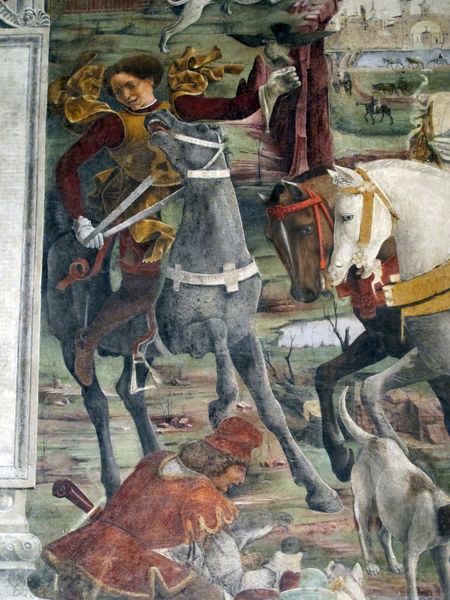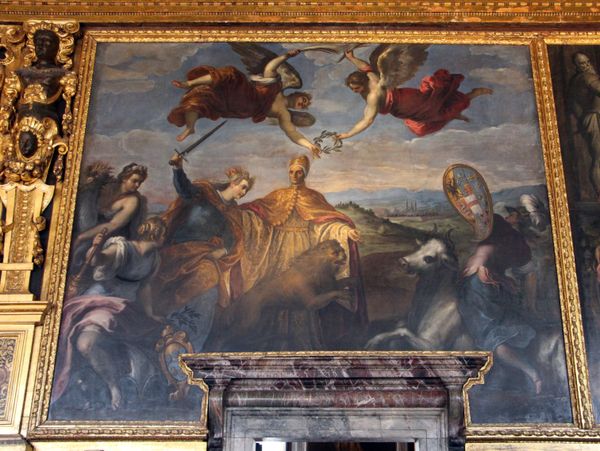
Allegory of March – Triumph of Minerva and Sign of Aries. Frescos in Palazzo Schifanoia (detail) 1470
0:00
0:00
painting, fresco
#
allegory
#
painting
#
figuration
#
fresco
#
mythology
#
history-painting
#
italian-renaissance
#
early-renaissance
Copyright: Public domain
This is a section of the Allegory of March, a fresco made by Francesco del Cossa in Palazzo Schifanoia, Italy. The painting represents the social values of the time and the patron’s worldview. The upper register shows the triumph of Minerva, goddess of wisdom and the arts, highlighting intellectual and cultural pursuits of the court. This contrasts with the lower register's depiction of the zodiac sign Aries, with people performing agricultural tasks, referencing the economic activities that sustain society. The division of labor and social hierarchy are clearly represented in the artwork through visual codes and cultural references. This fresco was commissioned by the ruling Este family, reflecting their political power. They used art to legitimize and promote their status. Art historians would study court records, letters, and other documents to understand the patronage system and the ways in which art was deployed as a tool of social and political control. Through studying these, we can understand the complex interplay between artistic production and the socio-political context in which it was made.
Comments
No comments
Be the first to comment and join the conversation on the ultimate creative platform.
